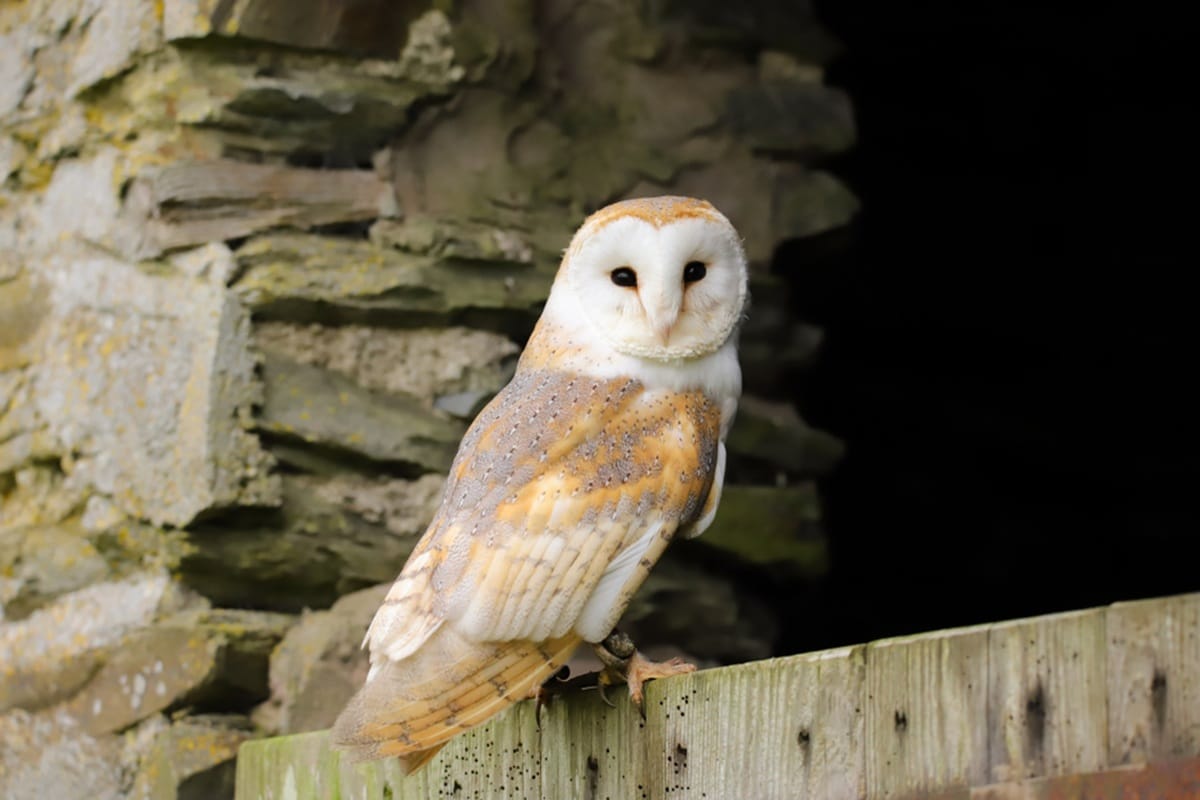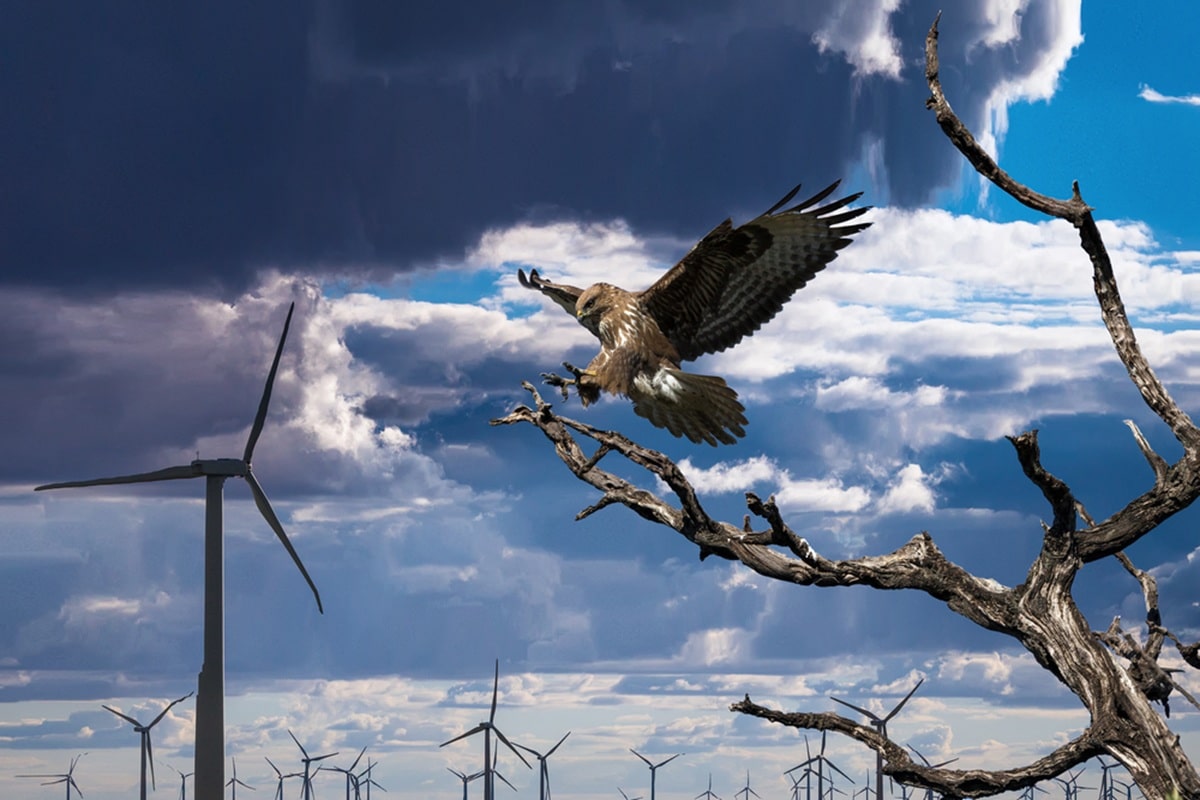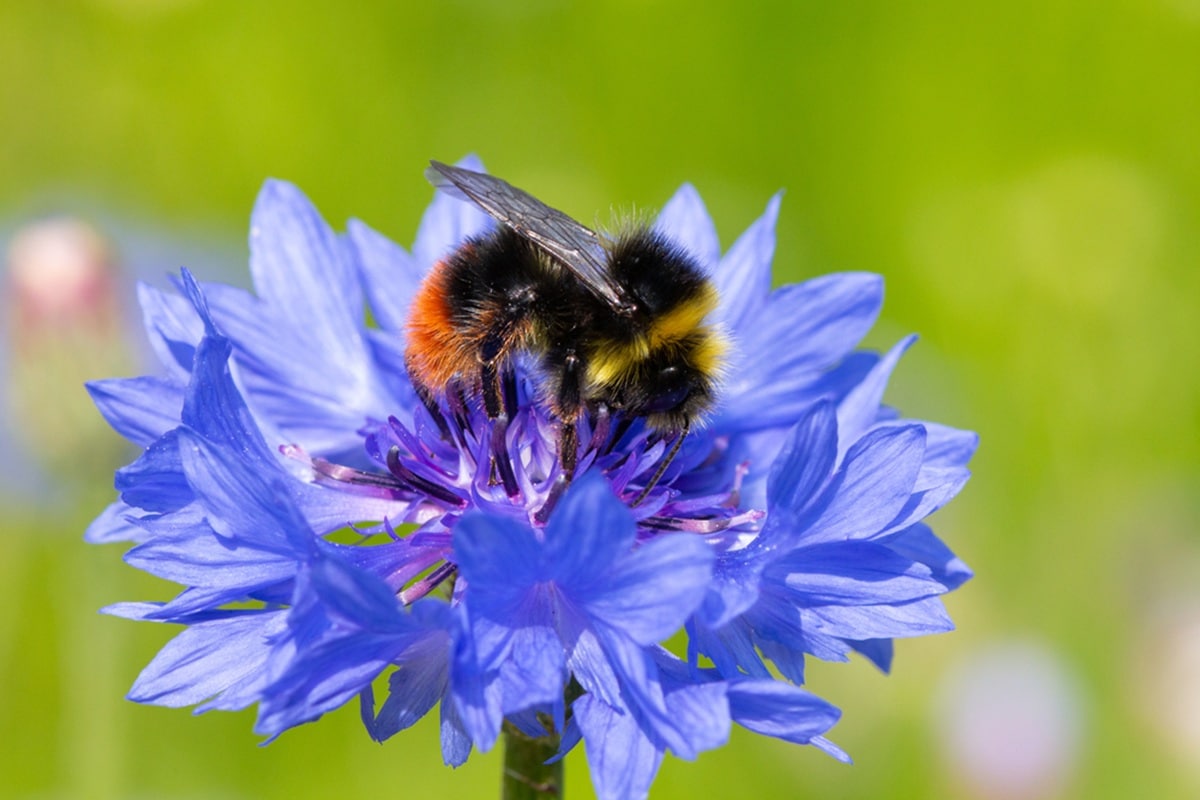
If you’ve ever strolled through a wildflower meadow and enjoyed the hum of bees, here’s a story to lift the spirits. In just a couple of years, former barley fields north of Perth in Scotland have been transformed into a haven for bumblebees and wildflowers.
The project, known as Rewilding Denmarkfield, has recorded an astonishing increase in both the number and diversity of pollinators. For ecologists, this is the kind of positive news that’s both rare and optimistic.
Rewilded land from barley monocultures
Denmarkfield is a 90-acre site near Perth, historically used for barley growing. Intensive arable agriculture involving ploughing, pesticide and herbicide use had stripped the land of its richness. According to project monitoring in 2021, when barley monoculture was still dominant, only 35 bumblebees were observed across the surveyed fields. Plant diversity was almost nil, and the landscape was largely uniform.
In spring 2021, landowners Amy and Graham Allen and the Rewilding Denmarkfield team began allowing parts of the land to follow a more natural path. They stopped barley cultivation in certain fields, reduced active intervention, created new habitat features and allowed natural colonisation of plants, supported by some strategic `seed islands’ – areas planted with trees or shrubs to support seed production and dispersal. Over time, they also introduced cattle to graze the land from August to October, helping provide habitat diversity.
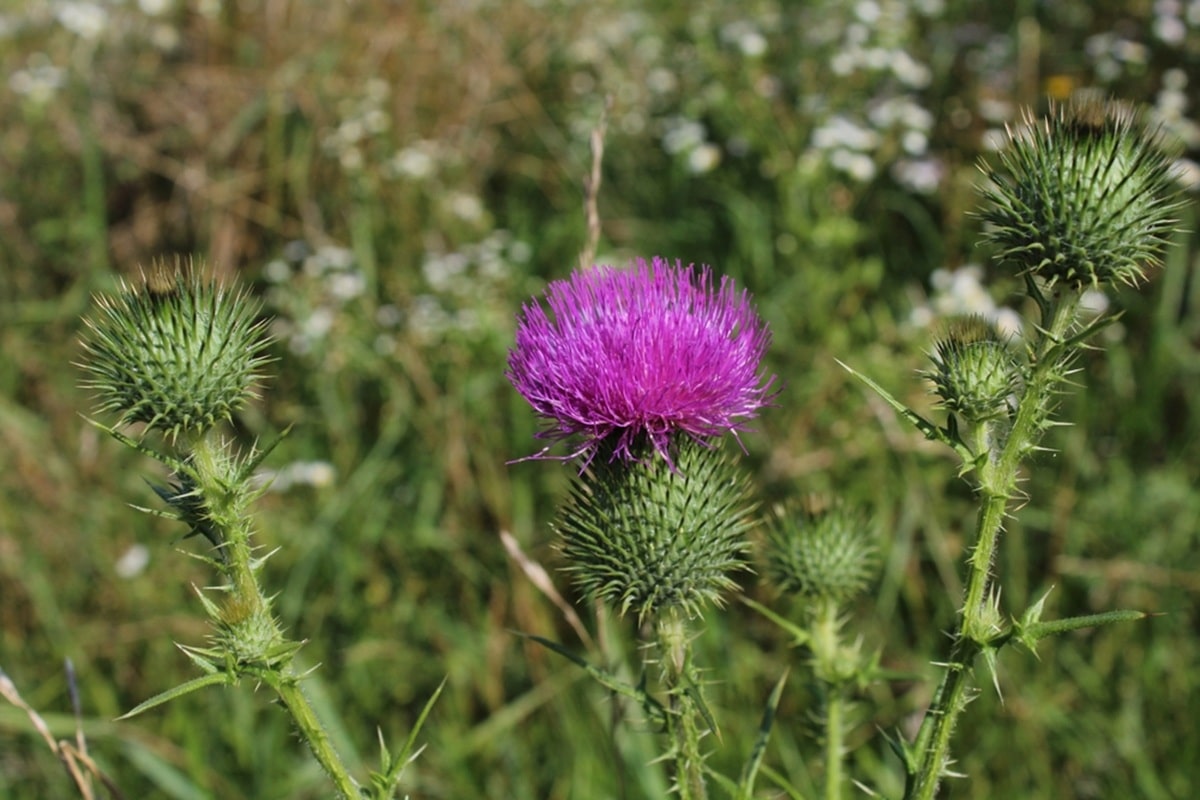
What changed: The pollinator boom
By 2023, two years into the project, the site had seen:
- A leap from 35 bumblebees to 4,056 in the same fields. That’s roughly a 116-fold increase as noted by the Organic Consumers Association.
- An increase in bumblebee species: from five species in 2021 to ten species in 2023. Rewilding Magazine reported that this includes common species like red-tailed, white-tailed, buff-tailed, but also “cuckoo” bumblebee species that exploit other bees’ nests.
- Wild plant diversity also rose: over 80 native plant species colonised the former barley fields by 2023, including species often dismissed as “weeds” like spear thistle and smooth hawk’s-beard; all valuable for pollinators because they provide nectar, pollen and habitat.
- Butterflies more than tripled in abundance. Red-listed bird species of conservation concern increased: from 11 to 17 species were recorded.
Speaking to Rewilding Magazine, ecologist and project manager Ellie Corsie said:
Letting nature lead has had a massive impact… Within two years, the bare soil and barley stubble was naturally colonised by 84 different plant species, and this superb variety of plants attracts thousands of pollinators.
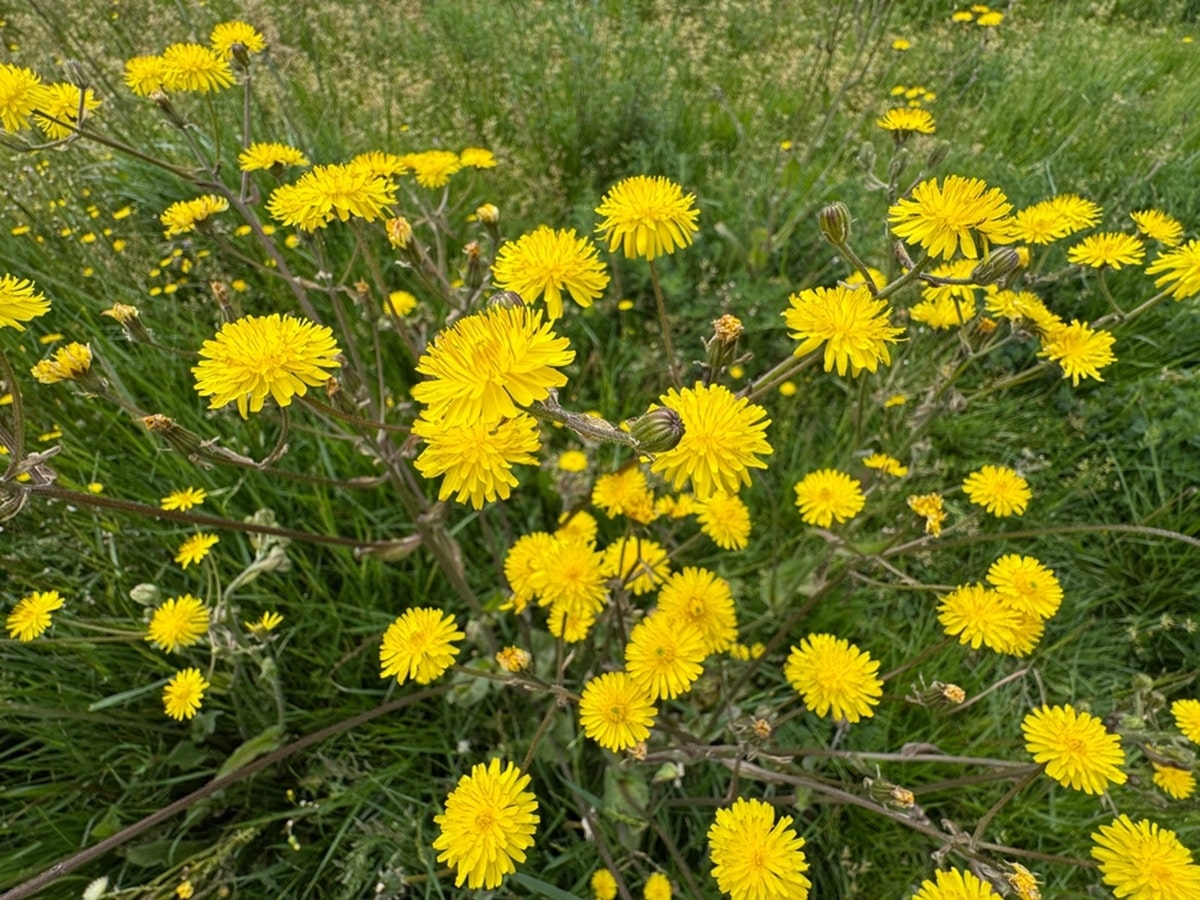
Why the environment has proved so suited to recovery
Several factors combined to make Denmarkfield particularly receptive to restoration and pollinator recovery:
Ceasing intensive agriculture
When ploughing, pesticide/herbicide applications and monoculture end, the land is allowed to regenerate. Soil disturbance declines and seed banks or neighbouring seed sources can colonise. At Denmarkfield, moving away from barley monocultures allowed wildflowers to emerge and gain traction.
Native wildflower plantings and seed islands
The project planted pockets of plants that were sparse on the site or absent, for example, blackthorn, hawthorn and flowering herbs, and created seed islands to help spread native species across the site, quickly creating diversity.
Habitat structured to boost diversity
Rewilding Denmarkfield didn’t simply let nature take over everywhere. Variation was introduced including undulations in the form of scrapes, limited grazing periods and open areas were retained while scrub and young trees were allowed to regenerate. These initiatives were to encourage pollinators that often prefer sites where there are different microhabitats such as sunlit patches, sheltered edges and flowering plants at different heights.
Minimal or no pesticide or herbicide impact
Removing or drastically reducing chemical inputs allows insects, soil organisms, and wild plants to establish without being poisoned or suppressed. Though the project doesn’t state a complete ban, the shift away from intensive arable farming reduces these impacts.
Monitoring and citizen science
Standard monitoring protocols are used, especially the Bumblebee Conservation Trust’s BeeWalk to track bumblebee abundance and species across areas of land, enabling comparison with national data. Local volunteers are trained and involved.
Who is behind the project and how it works
Rewilding Denmarkfield is the organisation driving the scheme. Amy and Graham Allen bought the land in 2017 and along with ecologist Ellie Corsie they set the project on its path.
Partnerships include Bumblebee Conservation Trust (for monitoring via BeeWalk), local community groups, volunteers, and people with ecological expertise. The project also engages the local schools and community through events, education, and hands-on activities like wildflower seed sowing, orchard maintenance and hedge planting.
Regular ecological monitoring is carried out for a range of species including bumblebees, butterflies, birds, botany and earthworms. The baseline data (2021) plus successive years allow comparisons.
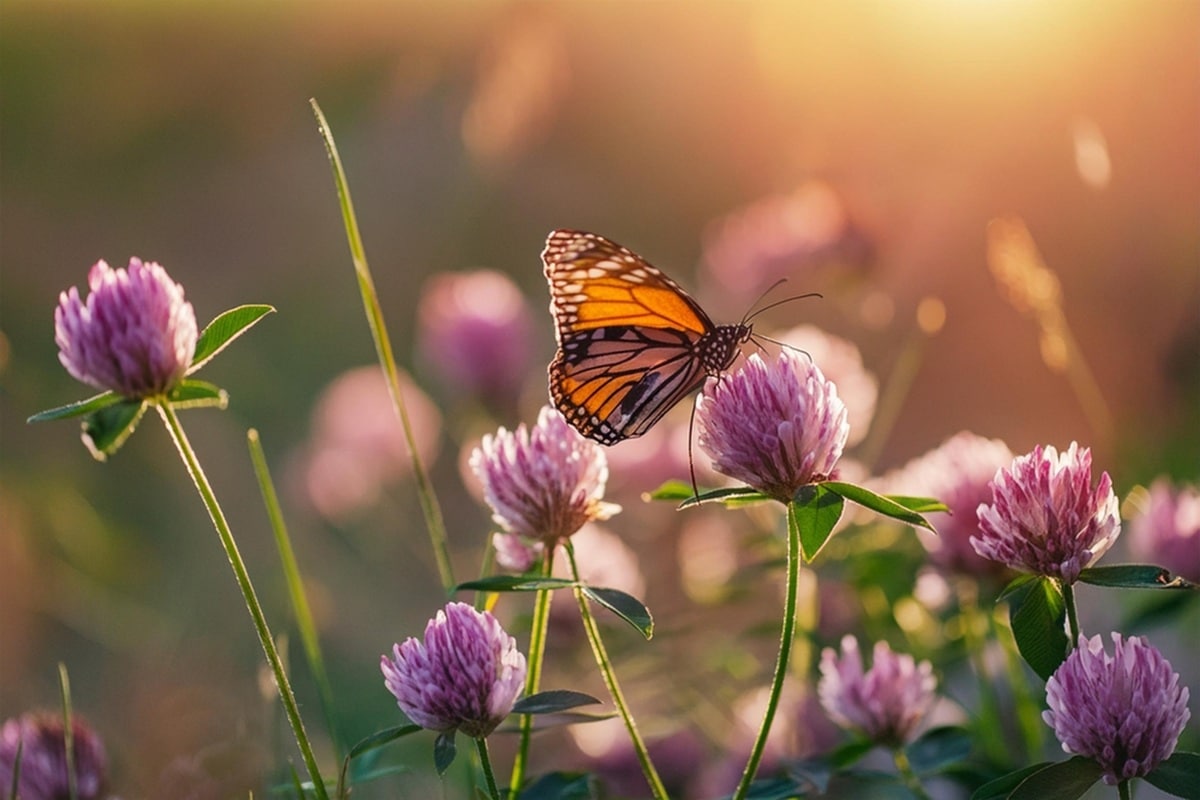
Challenges and limitations
While the story is inspiring, there are caveats and lessons to keep in mind:
- Variability between years: Early data suggests that 2024 was not quite as strong for pollinators as 2023, particularly for some common bumblebee species, for example red-tailed, white-tailed and buff-tailed. Weather, food availability, and other external pressures are still hugely relevant. However, even in 2024, counts were well above pre-rewilding levels.
- Surrounding land use pressures: The area is still under pressure from development for housing and roads, while surrounding land is intensively farmed. These factors can bring pesticide drift, light pollution and land fragmentation. The edges of these rewilded patches remain vulnerable.
- Time frame for maturity: Wildflowers can colonise quickly, but full ecological maturity including dense meadow systems, stable populations of rarer species and large trees, takes many years to decades. Tree regeneration currently comprises young saplings rather than mature woods.
What the numbers tell us
- From less than 35 to 4,056 bees in two years: This is an increase of over 100 times. The project often cites a “116-fold” increase.
- Species count doubling: From 5 to 10 species of bumblebee across the site. That means common bumblebees plus some less common ones, including “cuckoo bees,” which do not build their own nests but parasitise others. This is an important sign: not only quantity but diversity.
- Vegetation richness: Over 80 native plant species colonised the fields.
These numbers suggest that if land is given over to regeneration, pollinators can respond quickly, but protection is needed to ensure gains are not lost.
What this means for ecology, restoration, and policy
Rewilding Denmarkfield provides lessons for wider biodiversity recovery, both in the UK and beyond:
- Speed of recovery: Contrary to pessimistic expectations, ecosystems can show significant recovery in just 2-3 years once farming stops and native plants are allowed in.
- Indicator species matter: Bumblebees serve as good indicators of overall ecosystem health. If they return in abundance and diversity, many other species such as butterflies, birds and soil invertebrates often follow, which Denmarkfield has already shown.
- Policy relevance: This kind of result supports arguments for more land to be set aside, for agricultural subsidy reform, for pollinator-friendly practices, and for rewilding to be included in biodiversity net gain or nature recovery plans.
- Community engagement: Projects like this work best when local people, volunteers and schools are involved and feel ownership. Denmarkfield’s volunteer programme, its community orchard, events, and educational outreach add social value.
- Protection and vigilance: Gains need protection from external negative pressures: pesticide drift, weather extremes, land development, or even reversion to agricultural use. Monitoring is essential so that trends are understood and maintained.
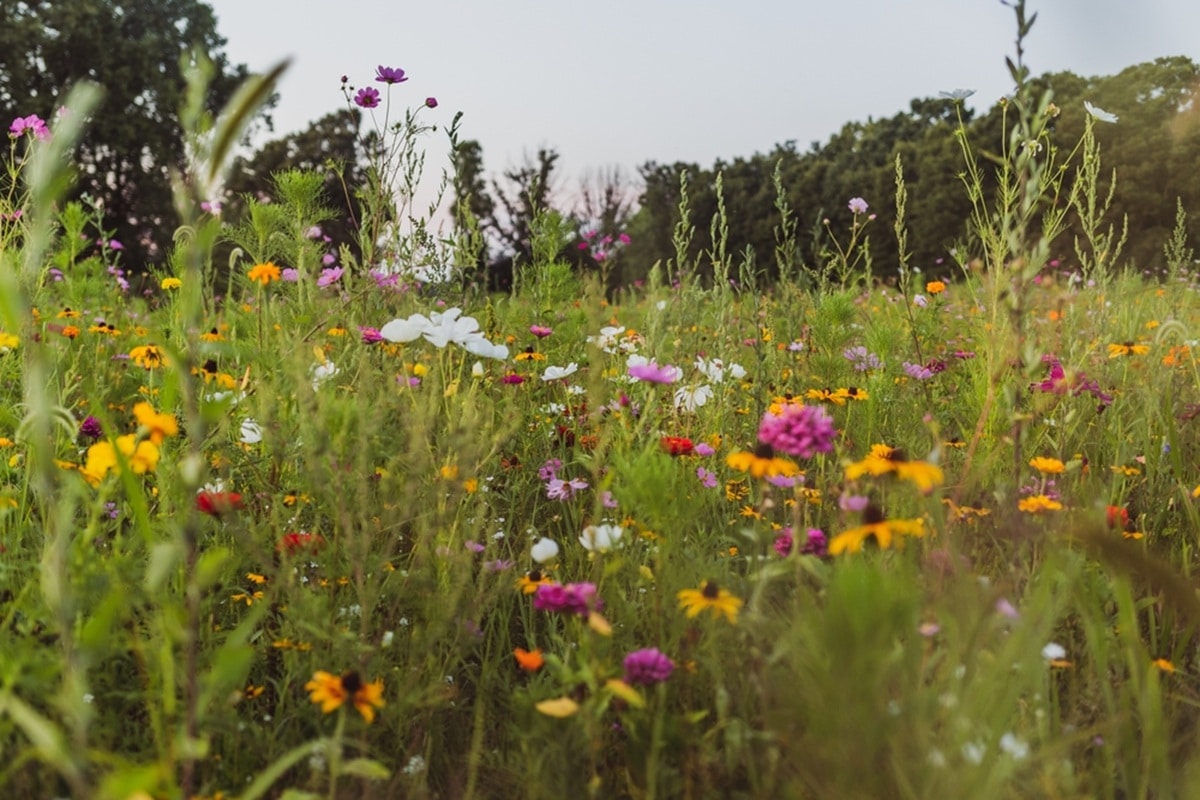
What’s next: Where Rewilding Denmarkfield is headed
- Monitoring continuing: The project now has baseline data for 2024-25 and aims to keep tracking into future seasons to see whether bumblebee numbers and species diversity remain high, whether rarer or specialist species appear, and what happens over dry or bad years (Scottish Pollinators).
- Habitat refinement: More scrub, trees, nesting features and water availability is planned to support a wider range of bees and insects. Using cattle for grazing in autumn will open up the sward, creating edges and diversifying plant communities.
- Scaling up: Denmarkfield could serve as a model. Similar rewilding efforts may be adopted on other former agricultural land, especially near urban fringes, to create networks of wildflower havens.
- Public education and involvement: Expanding citizen science, school programmes, community events, and even visitor-friendly walks such as ‘pollinator safaris’ help build public awareness and support – essential for policy and funding. Rewilding Denmarkfield already organises workshops, educational sessions, and has a “Friends of Denmarkfield” volunteer group.
- Policy influence: The results strengthen arguments for biodiversity net gain, for making it easier to restore land, for agricultural reforms that reduce pesticide and herbicide use, and for policies that support pollinator recovery.
Why this matters, especially now
Here are a few reasons this kind of project hits at a critical moment:
- Pollinators are under threat: UK data show that in 2024 bumblebee numbers fell to their lowest on record, with some species heavily affected by climate variation, habitat loss, and pesticide exposure. Rewilding Denmarkfield is a counter-story, offering proof that habitat restoration can produce results.
- Nature deficit and dismay: Many people feel ecological decline deeply. Stories like this give hope and motivation. They show that change is possible, even on relatively small land parcels.
- Connectivity and landscape scale: Pollinators need networks of habitats creating stepping stones. This project shows a single site can recover, but wider scale restoration will require policies and funding.
Nature recovery is possible – with motivation and encouragement
The Denmarkfield site’s transformation from barley monoculture to wildflower-rich meadows humming with bees is more than a cheering story: it’s proof of a concept. Let nature lead, facilitate some of the processes (seed islands, intentional plantings, limited grazing), remove chemicals, give space and very quickly, nature responds.
For ecologists, policymakers, farmers and gardeners alike, Denmarkfield offers lessons: ecosystem recovery isn’t just for national parks; it can happen in farmland, near cities, on 90-acre sites – and every bit counts.
If you’re thinking of rewilding part of your garden, supporting local pollinator-friendly projects, or backing policies that protect nature’s recovery, then projects like Denmarkfield highlight what is not just ideal, but possible.


